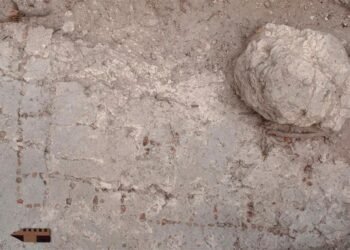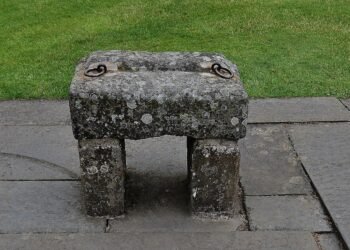Archaeologists recently embarked on an underwater expedition in the Mediterranean Sea to explore the famed Antikythera shipwreck, a site that dates back over 2,000 years

Located in the Aegean Sea off the coast of Greece, this Roman-era wreck, discovered by sponge divers in 1900, has yielded a plethora of artifacts, including the renowned Antikythera mechanism, considered the world’s oldest analog computer.
From May 17 to June 20, 2024, an international team led by the Swiss School of Archaeology in Greece (ESAG) and supervised by the Ephorate of Underwater Antiquities of the Hellenic Ministry of Culture and Sports, conducted an expedition to the Antikythera wreck. The favorable weather conditions during this period allowed the team to make significant discoveries, including a well-preserved portion of the ship’s hull. This structural part of the ancient vessel, complete with its original fasteners and external protective coating, provides valuable information about ancient shipbuilding techniques.
Professor Lorenz E. Baumer of the University of Geneva, a co-director of the project explained, “This structure allows us to better understand the ship’s construction characteristics that had remained elusive until now. The hull was constructed using the ‘shell first’ method, where builders first made the hull with wooden boards and then installed the ribs inside, which is the opposite of modern shipbuilding techniques.”

The expedition unearthed approximately 300 objects from the site, including 21 marble fragments, numerous structural elements of the ship’s hull, and over 200 ceramic shards. These finds suggest the presence of multiple statues. Analysis of amphorae revealed a variety of types, including those from Chios and Rhodes, indicating a wide trade network.
Baumer remarked, “We can learn a lot about market and sea cargos during the 1st century BCE. This ship came from the Eastern Mediterranean and was most likely heading to Rome.”

One of the most fascinating artifacts recovered from the shipwreck is the Antikythera mechanism, a hand-powered device featuring a complex system of interlocking gears. This ancient analog computer was used to predict the movement of astronomical objects, aiding in the planning of important events such as religious rituals and agricultural activities.
The research team employed advanced techniques to explore the shipwreck, including the use of remotely operated vehicles (ROVs) and closed-circuit mixed-gas rebreathers. These technologies improved the efficiency and safety of the dives, allowing for real-time monitoring and the creation of 3D digital models of the wreck site. This comprehensive methodology enabled the team to document visible pottery remains and open new excavation trenches, revealing further archaeological material.

The 2024 expedition also confirmed the presence of a second wooden vessel approximately 650 feet from the main wreck. This discovery raises intriguing questions about the circumstances surrounding their sinking. Previous research had hinted at the involvement of multiple ships in this ancient maritime tragedy, and the new findings add weight to this theory.
The Antikythera shipwreck site, located 45 to 70 meters below sea level, has been remarkably well-preserved due to its depth. As Baumer noted, “With the wooden parts that we found, we hope to find out when exactly and maybe also where it has been built.”
The Antikythera expedition is part of a broader research program running from 2021 to 2025.























